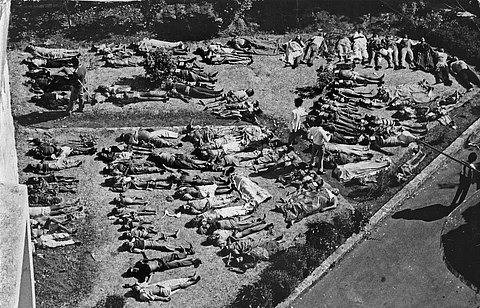

The extent of the toxic gas methyl isocyanate (MIC) — leaked during the Bhopal Gas Tragedy — on the human body remained unclear for years, as the government provided little medical or scientific information for decades. However, a landmark study released in 2010 finally revealed the shocking extent of the damage.
The 2010 study was carried out by the Indian Council of Medical Research (ICMR). Titled Health Effects of the Toxic Gas Leak from Union Carbide Methyl Isocyanate Plant in Bhopal, it was based on pathology and toxicology studies conducted from 1984 to 1992.
The ICMR report revealed that MIC caused N-carbamoylation and S-carbamoylation of proteins and tissues in the survivors. ‘Carbamoylation’ occurs when a chemical like MIC reacts with proteins, enzymes, or other biological compounds, altering their structure and function permanently.
Thus, proteins like haemoglobin, essential for oxygen transport, were structurally altered, impairing their function. MIC also impacted glutathione, a critical antioxidant that neutralises toxins, reducing its effectiveness and increasing vulnerability to damage.
The permanent structural changes in proteins and tissues disrupted normal physiological functions, making recovery impossible. MIC-induced carbamoylation left survivors with irreversible damage to their body’s proteins and tissues.
In December 1984, immediately after the disaster, autopsies were conducted on 731 bodies—a large-scale effort that yielded alarming results.
Union Carbide India Ltd (UCIL), from whose plant the MIC had leaked, consistently denied that the gas produced hydrogen cyanide (HCN), a deadly byproduct. As a result, victims did not receive immediate antidotal treatment, costing many lives. Autopsies revealed that victims’ blood had turned cherry red, a classic sign of hydrogen cyanide poisoning.
Later investigations identified hydrogen cyanide as a critical toxic factor alongside MIC. Subsequently, the administration of sodium thiosulfate (NATS) injections began. NATS, an effective antidote for cyanide poisoning, reacts with cyanide to form thiocyanate, a harmless compound excreted via urine. Patients receiving NATS injections showed immediate improvements in respiratory and neurological symptoms.
For the first time, a double-blind clinical trial was conducted during the tragedy to test NATS’s efficacy. In this method, neither the patients nor the doctors knew who received the actual treatment, ensuring unbiased results. Post-treatment, increased thiocyanate levels in the victims’ urine confirmed successful detoxification. However, this therapy would have been most effective if administered immediately after exposure, as delays limited its benefits.
Autopsies showed severe inflammation and haemorrhage in victims’ lungs, brain swelling, small haemorrhages, and damage to other organs. Survivors also suffered from long-term health issues such as chronic asthma and susceptibility to infections; reduced vision and irritation; mental stress and behavioural disorders; increased miscarriage rates, impaired foetal development, and congenital defects.
The ICMR report noted that legal constraints delayed the publication of critical scientific conclusions. Additionally, several unidentified toxic compounds found in the MIC tank’s residue remain poorly understood, limiting comprehensive evaluation of the disaster’s full impact.
The report also proved that the tragedy’s devastation was not solely due to MIC toxicity. The pyrolysis (thermal decomposition) of MIC in the tank generated several toxic byproducts that exacerbated the health effects. These compounds, some of which remain unidentified, played a significant role in the long-term health impacts observed among survivors.
The ICMR’s findings revealed the tragic consequences of delayed intervention and the long-term implications of MIC exposure. The revelations about MIC’s lasting damage serve as a grim reminder of the disaster’s enduring human toll.